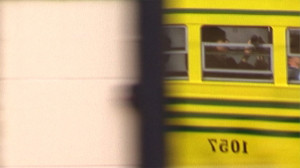Wise to the reality that it’s easier to draw attention to a series than to a bunch of one-off screenings, especially when it’s christened with the wink-and-a-nod title Local Boy Makes Good, Yerba Buena Center For the Arts unveils a curious quartet of Bay Area-centric features and documentaries beginning tonight with Doug Wolens’ The Singularity. The subjects range from artificial intelligence to street photography, sexual intimacy to faith in the face of an apocalypse, yet a tenuous thread connects the filmmakers: the effects of new technology on image-making.
The Singularity (Sept. 12, with Wolens in person) is a no-frills, talking-heads doc in which front-line players and deep thinkers in computer intelligence riff on its implications for human civilization in the not-too-distant future. That’s catnip for some of you, I realize, and anathema to others. Especially since we can’t reasonably expect the interviews to capture the frisson of discovery or revelation, for the simple reason that the subjects have already expressed their philosophies and predictions countless times in numerous settings.
Wolens smartly eliminates the bad taste of pre-digested oratory — although Ray Kurzweil’s self-satisfaction still seeps through — by editing the interviews against each other to create a debate. The remarkable thing, though, is how the personalities of the interviewees come through; I was never bored staring at a face and listening to him or her expound at far greater length than the sound bites I’m accustomed to. I think it has something to do with the hi-def digital camera Wolens used, which elicits a response in the viewer more akin to film than video. The Singularity also screens September 16 at the Castro as part of an all-day retrospective of Wolens’ docs.

Gibbs Chapman’s mother mortar, father pestle
Gibbs Chapman’s S.F.-set narrative mother mortar, father pestle (Sept. 19, with the director in attendance) is a beautifully achieved and deeply pleasurable exemplar of banana-peel noir. A disturbance has taken place in the upper atmosphere, portending a day when the world won’t end with a bang but with a splat. I couldn’t tell, frankly, if the characters are thrown off-kilter by the gradient change in the environment or become more concentrated versions of themselves, but their interactions run the gamut from absurd to surreal to hilariously recognizable. Chapman envelops his droll worldview in a lush, enveloping mise en scene built on a rock-solid base of black-and-white celluloid.




